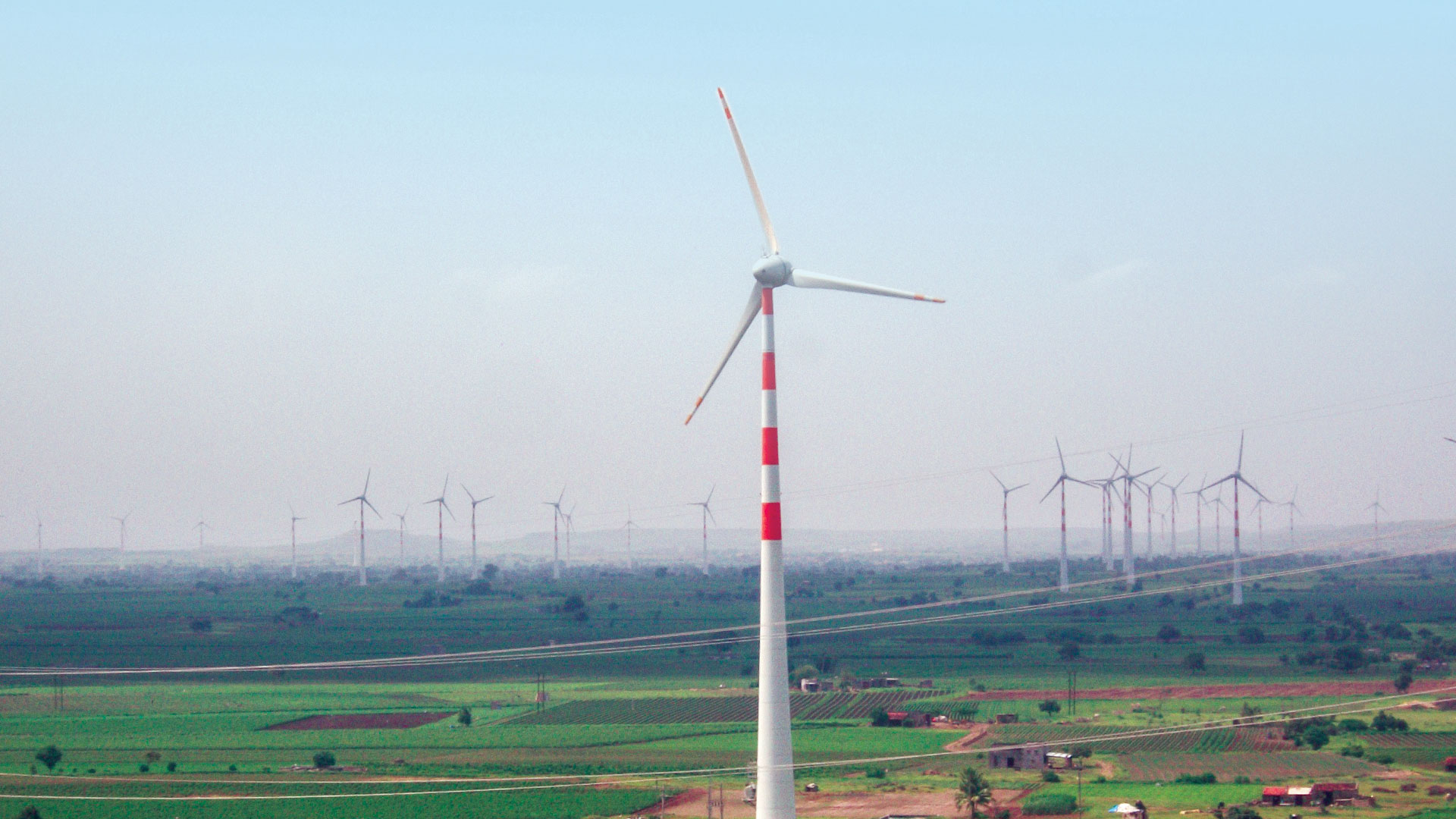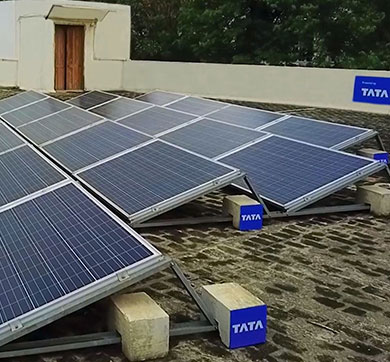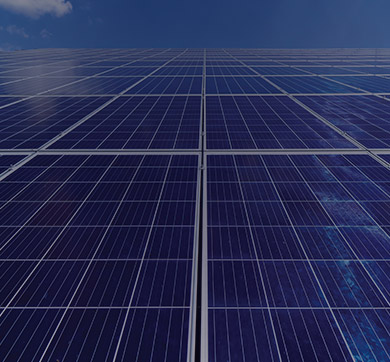August 2021 | 901 words | 3-minute read
"To cherish what remains of the Earth and to foster its renewal is our only legitimate hope of survival,” said American environmental activist Wendell Berry.
That is exactly the sentiment that is driving Tata Power across its diverse lines of business. The company has the distinction of being an integrated player in the renewables space. With each unit of power generated through renewable means, whether solar, wind or hybrid projects, the division is not only doing its bit to renew planet Earth but also enabling its parent company to move ever closer to its goal of carbon neutrality.
The company is also a reputed player in the EPC (engineering, procurement and construction) space, working as a contractor for third parties and executing its own projects in the wind and solar sectors. For utility scale projects, Tata Power not only procures land but also engineers and sets up the project and maintains it for the client. It also sets up transmission lines, substations, etc.
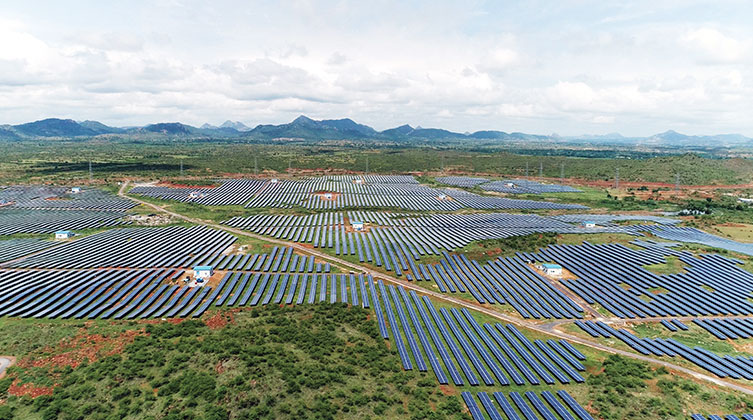
Ashish Khanna, president – Renewables, Tata Power, says, “We are committed to an annual growth of at least 2GW in our own investments. We will be 4.2GW at the end of the financial year. By 2025, we should definitely be a 15GW company. By 2030, we will be a 25GW company with our own investments. We have high aspirations for multiple growth in all the segments.”
The optimism that stems from these goals rides on steady growth. The company is already India’s largest vis-à-vis its manufacturing capacity and strength of its EPC contracts. The growth of this veteran with a 31-year-long history has outpaced its competitors in the solar pumps, rooftops and microgrids space. The company has expanded its manufacturing capacity for solar cells from 300MW to 530MW and for solar modules/panels from 400MW to 580MW. It has also shipped over 1.4GW modules to landmark projects in the Netherlands, the US, Denmark, Vietnam, etc.
Transforming rural India
The highlight of the company’s renewable portfolio is its ability to transform the face of rural India. For farmers and others who would otherwise have had to struggle to get water across long distances, the low-cost solar powered water pump is a lifesaver. By freeing the farmer and the rural community to use their time and energy in other ways, rather than for the tedium of ferrying water, the pump has quickly captured the market.
Similarly, the solar microgrid is empowering the rural hinterland with green power. The electricity generated through the microgrid is transmitted to a central controller called the Power Conditioning unit, which then supplies electricity to homes, shops, streetlights, etc. The surplus power that is generated or unused through the day can be stored and used at night.
The initiative is a collaborative effort involving Tata Power, the Rockefeller Foundation, Smart Power India and the Institute for Transformative Technologies. The innovative model aims to provide clean power to nearly 5 million households and enterprises, and directly impact the lives of 25 million people over the course of this decade.
As envisaged, the impact has already begun to be felt. The availability of this power has enabled the proliferation of a host of enterprises, including oil extractors, flour mills, rice hullers, and photocopiers that keep the rural economy running.
The system also utilises the services of residents from the community to help set up and maintain the microgrid and collect tariff. Tata Power trains and certifies these subcontractors. It also provides the residents energy efficient appliances that can help reduce their power consumption.
Mr Khanna says, “These facilities combined with the assurance of reliable power present a great business opportunity and encourage them to take up entrepreneurship. We have already installed 161 microgrids; another 40 are in the making. We have covered more than 4000 customers across 200 villages.”
With a lifespan of 25 years, the microgrid enables local entrepreneurs to be assured of livelihoods for that period, thereby staving off internal migration. Mr Khanna sees this as benefitting both the company and rural community. He says, “Our products are best-in-class and the business opportunities that this country offers are immense.”
The quality of its products and services could go a long way towards influencing the perception of efficiency relating to solar products in general. Mr Khanna says, “Our projects and manufacturing are designed to work well over a lifespan of 25 years. We are leaving a legacy of reliability behind us. The efficiency level of our cells and modules is the best in the country.” Tata Power hopes that the perception of the quality will encourage large-scale solar adoption in the country.
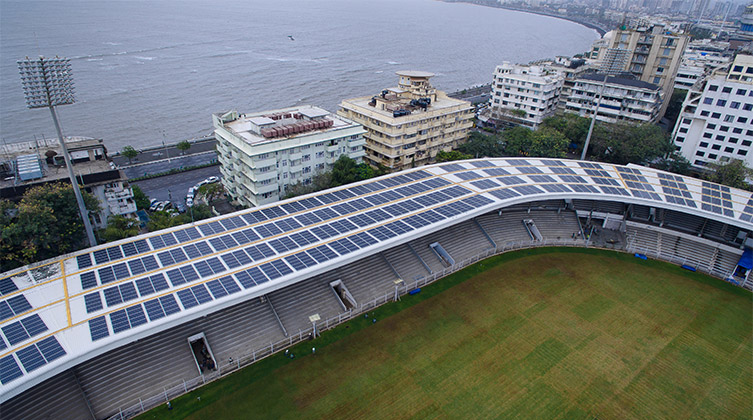
Flagship projects
- World’s largest solar rooftop installation at the Brabourne Stadium, Mumbai: 820.8kWp solar rooftop system; estimated generation 1.12 million units per annum; offset 840 tonnes of carbon annually; completed in 100 days.
- 50MW Kasaragod Solar Park: Expected to generate about 101MUs of energy annually; completed a month ahead of the deadline, despite Covid-19.
- 10.8MW Rooftop Solar Power System for the Agency for Non-conventional Energy and Rural Technology, Kerala: Set up at over 7750 distinct locations in Kerala, each location of 1-5kWh; able to withstand wind speeds of up to 160kmph.
Sharing goals
With each new customer it gets on its side, and each kWh of power generated, Tata Power is taking surer steps towards its goals. Mr Khanna says, “When you are looking for sustainable growth in the long term, you invest in fundamentals. You make sure your stakeholders are comfortable with your decisions. You involve them in operations and maintenance and influence them for good.”
Tata Power is not just manufacturing pumps and putting microgrids together, but it is actually renewing possibilities in people’s lives.
For Tata Power, the future is looking bright. “We are at the right place at the right time and have established our credibility in the market,” says Mr Khanna. “In our industry, technology changes fast. The whole renewables space is like a start-up, and there is much to learn.”
—Cynthia Rodrigues
